Aconcagua: Your Top Five (Six) Questions Answered
Aconcagua is a true test for any mountaineer, with a well-earned reputation for being dusty, windy, cold, and extreme. Aconcagua (22,841 feet / 6,962 meters) is the second highest of the Seven Summits, the tallest peak in the world outside the Himalayas, and the apex of both the Southern and Western Hemispheres.
There is no shortage of details to consider before and during your Aconcagua expedition. From gear and training to mules and porters, we want to ensure you have all the resources for a safe and successful climb. CTSS outfits our teams with the best logistics and the most capable, qualified, and seasoned guides to support your safety and success on Aconcagua. To learn more about our upcoming expeditions, head to our website.
To help potential climbers better understand what it means to take on a climb like Aconcagua, we gathered up your top questions and asked Mike Hamill, owner of CTSS and author of Climbing the Seven Summits, and the talented team at CTSS to answer a few.
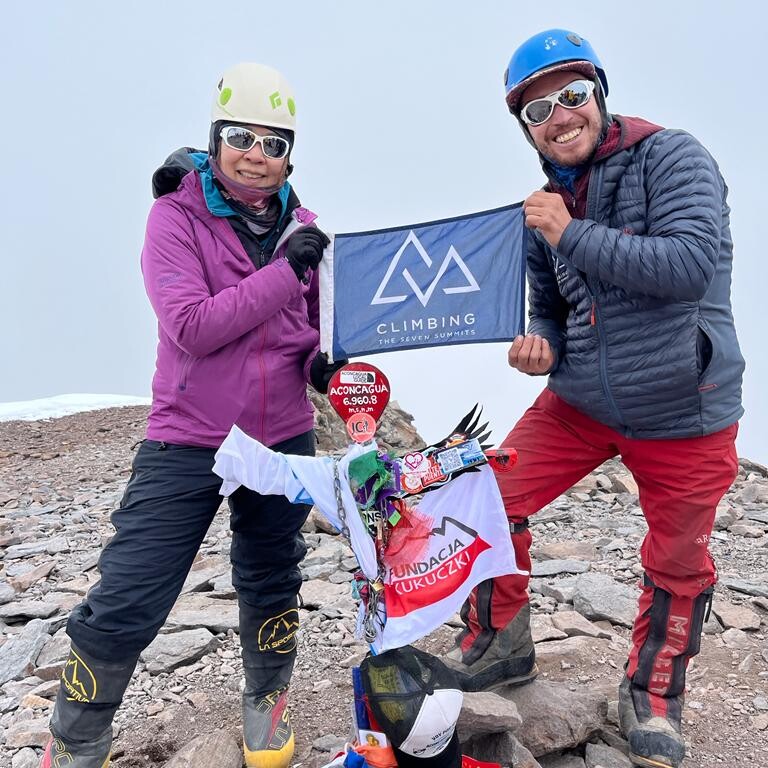
What route are we climbing?

CTSS expeditions ascend via a variation on the False Polish (also known as the 360 Route) that Mike Hamill helped develop more than a decade ago. This route approaches the mountain through the Vacas and Relinchos Valleys and uses the first camp on the False Polish Route.
From there, it traverses over to the higher camps on the old Guanacos Route and uses one more camp than the typical False Polish Route. Our final camp is higher than the False Polish Route’s, which makes for a more approachable summit day. By traversing the mountain and descending via the Normal Route to Plaza de Mulas, we see a different side of the mountain, have an easier descent, and enjoy a shorter hike back out to the road, thus taking a day off the descent.
Our carefully planned route is less crowded and cleaner than the Normal or False Polish Routes. It incorporates shorter days and better climbing terrain than the False Polish Route. This variation offers you the best of climbing on Aconcagua: fewer people, less repetition in your climbing, a cleaner route, shorter days, better terrain, more variation of scenery, and a shorter/easier descent.
Overall, it’s a huge advantage. We have had incredible success traversing the mountain and climbers really enjoy this option.
What’s the best way to train for carrying heavy packs on a long expedition?
Aconcagua asks a lot of climbers physically. We sat down with our friend and partner Lisa Thompson from Alpine Athletics to talk shop about Aconcagua and how climbers can prepare for carrying heavy loads multiple days in a row at high altitudes.
- Get comfortable ascending and descending steep, unstable rock while wearing a heavy pack. If you have access to hills with loose rock, you’re in business! If you’re elevation-challenged, you’ll need to get creative and consider a loose rock pile, sand dunes, or urban features like retaining walls. In the gym, you can focus on single-leg squats and lunges on an unstable surface like a Bosu ball or work with resistance bands to strengthen stabilizers and core muscles. It will also expand your confidence in ascending and descending Aconcagua’s rocky slopes and ultimately allow you to conserve energy by moving more efficiently.
- If Aconcagua is your first multi-week expedition, build endurance and resilience on other long endeavors. Take an Alpine Academy course, head to Ecuador or Nepal for a multi-day trek, or plan multi-day backpacking trips with elevation gain (extra points for cold weather) or a century ride. These intermediate goals are also great ways to test gear, nutrition, and hydration.
- Give yourself plenty of training time to build the strength to carry a 55-pound (25-kg) backpack. Backpack weight on Aconcagua is no joke, and your body needs time to adapt to the stress of carrying a heavy load uphill for several hours on successive days. After you’ve built a solid level of general fitness, begin weighted backpack carries on hikes or a tread or stair mill. When you’re adding weight, do what feels right for your body, but you can aim for 5 pounds (2.3 kg) every two weeks. Work up to carrying 10% more weight than you’ll carry on the mountain.
When you’re training for Aconcagua, you should aim for 45-60 minutes three to four times per week and one workout longer than two hours each week. Try stacking your workouts together (i.e., working out two to three days in a row, then taking a rest day) to mimic the fact that you’ll be climbing several days in a row during the expedition.
Finally, listen to your body! Getting injured is an annoying reason to miss a climb or the summit. If you notice persistent joint pain or don’t fully recover in 1-2 days after a workout, take some time off to let your body heal. Working out doesn’t make you stronger, resting after working out makes you stronger.
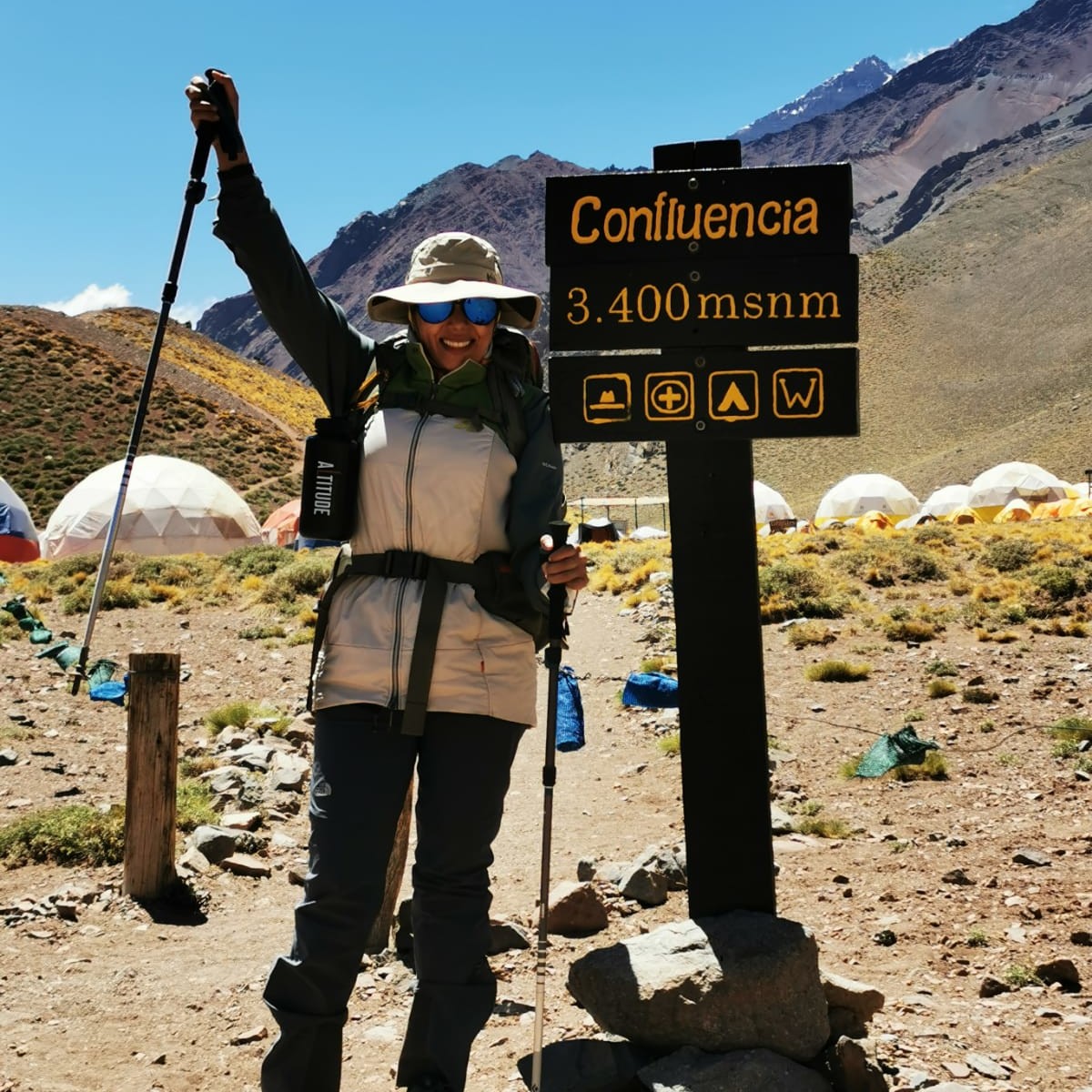
How do the porters on Aconcagua work, and what’s the benefit?
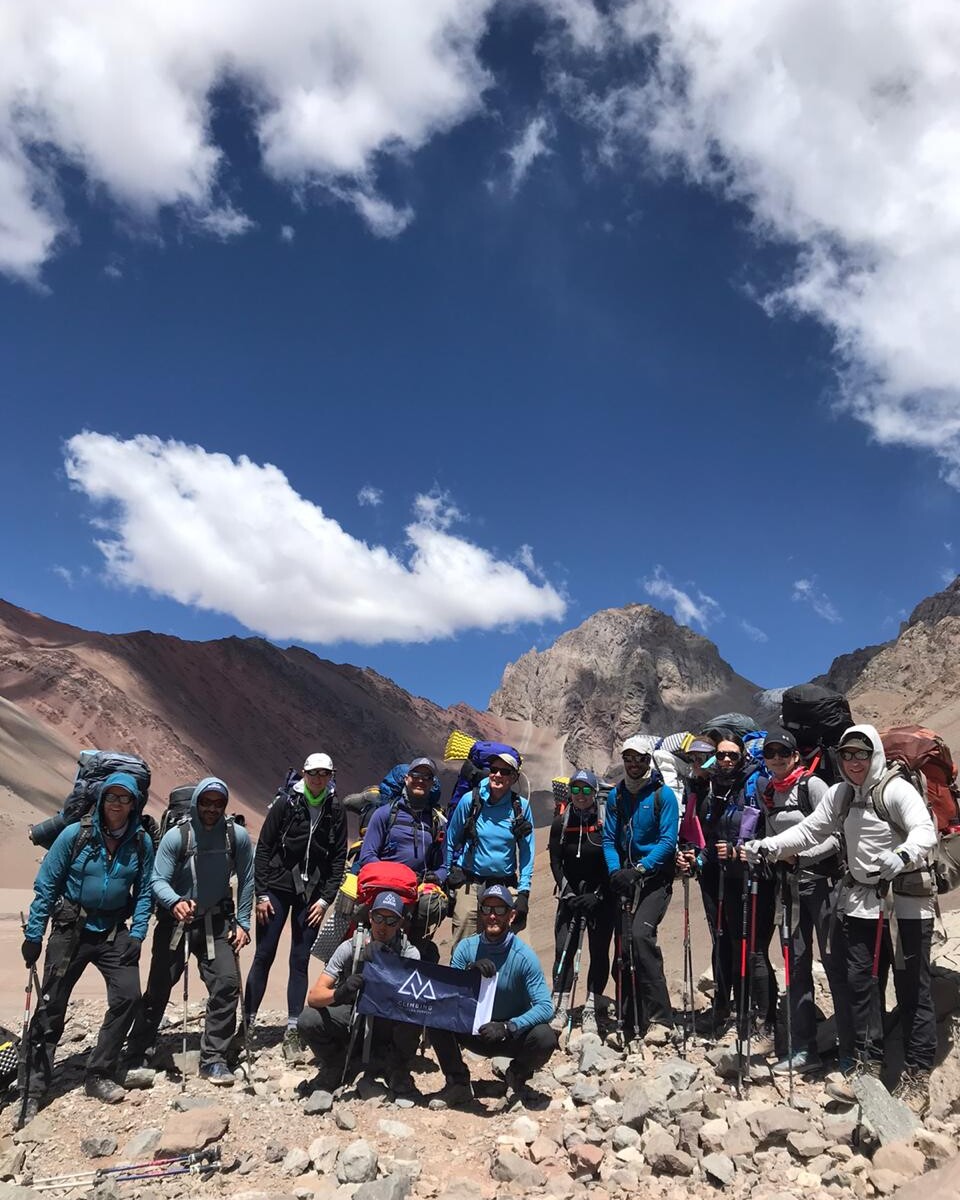
Since we have double-carried all of our gear up the mountain to high camp, we will have a lot of gear to bring down after our summit bid in one push to base camp on the other side of the mountain. Climbers are tired after the summit bid and generally decide that it’s worth paying porters to assist in bringing some of their gear down from high camp to base camp (even our guides tend to take this option). Carrying everything down can be rough on your knees.
Usually, we split a few porters on the way down to lighten the load. Two people can split a porter load so that each climber can offload 10kg of weight (20kg total for a porter load). If you think that this might be something you are interested in, please make sure to have some extra cash available, as the on-mountain economy is cash-only. This is entirely optional but a nice service to have available to us. If you’ve hired a porter for the entire expedition, then a 20kg carry-down from high camp will be included for you.
To see the most up-to-date information on hiring a porter and the costs, head to our website.
We want all climbers to enjoy their experience and be successful on Aconcagua, so we encourage the use of porters if this will aid your success and enjoyment. It’s important to note that porters are very expensive on Aconcagua relative to other climbs.
A standard porter load is 20kg and charged at a flat rate up to that maximum weight (i.e., if you only have 17kg, you will still be charged the 20kg rate). Additional weight will be charged at a prorated amount per kilogram. It is important to note that if you are using a porter, you will still need to carry some of your gear. However, your pack will be closer to 10-14kg rather than 20-25kg for each carry and move up the mountain.
Aconcagua is typically climbed with each team member carrying their own items and a portion of the group gear (e.g., food, tent, stoves, etc.). Your personal load from camp to camp will often include 3-5kg of group gear.
On Aconcagua, our teams employ a double carry, a technique that not only supports acclimatization but also makes moving large amounts of gear up the mountain easier. A double carry, simply put, means you will take two trips to each camp – a carry day and a move day. For example, we will pack all our extra food and any gear we don’t need at the moment into our packs, ascend from Plaza Argentina to Camp 1, cache our gear at Camp 1, and then return to Plaza Argentina the same afternoon to sleep low. That is our carry day. The next day, all the remaining gear goes in our packs, and we re-ascend to Camp 1, staying there and leaving Plaza Argentina behind. That is our move day. Repeat for Camp 1 to Camp 2 and Camp 2 to Camp 3. It’s important to note that if you hire a porter, they will only assist on your move day and will not be traveling with the team.
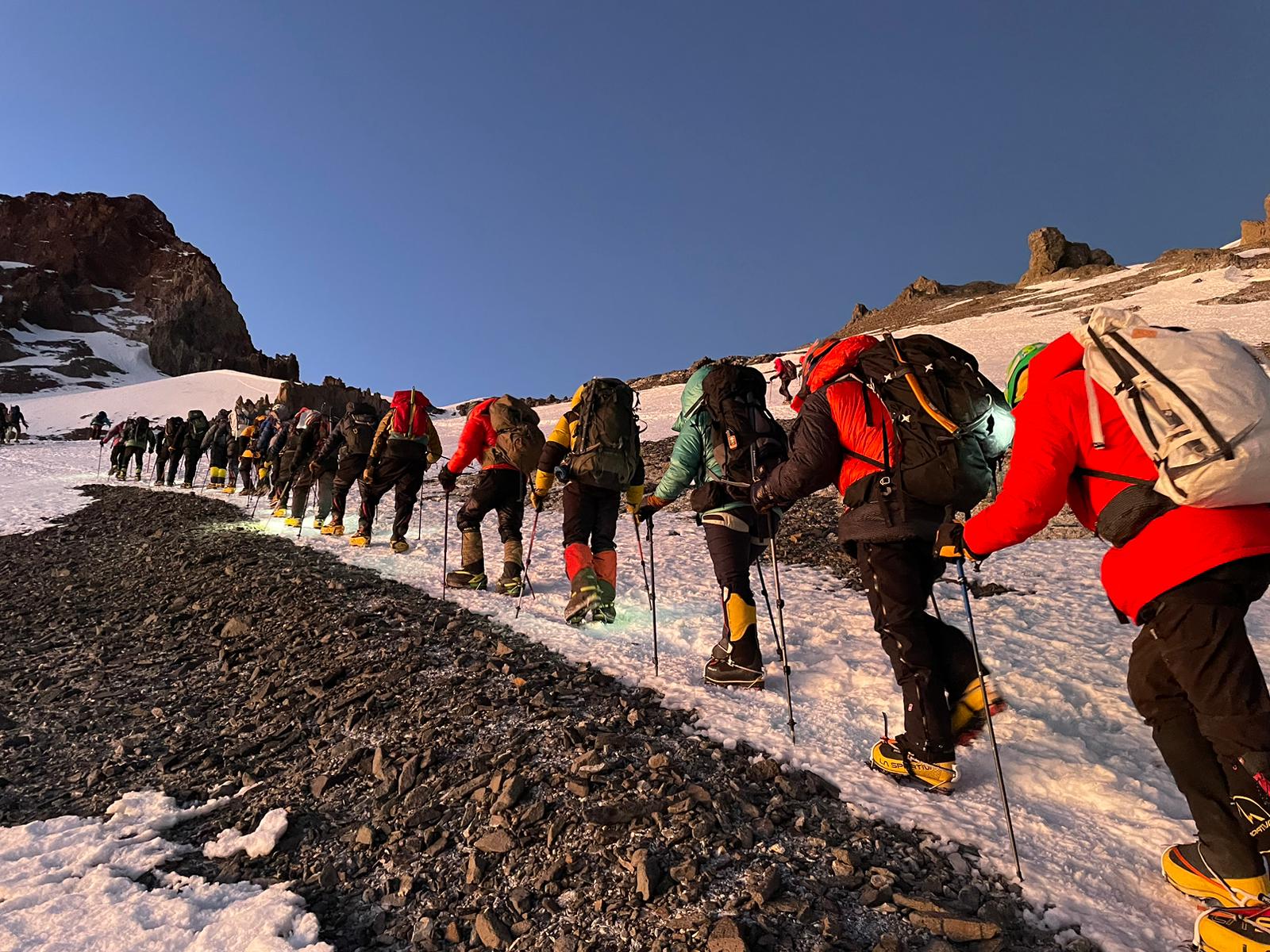
What can I do to mitigate the cold, especially on summit day?
Layer, layer, layer! Keeping your core warm is the foundation for keeping everything else warm. Some folks with cold extremities have found that adding a very light vest to their layering system bumps up their core temperature without causing quick overheating. From the warm core, blood needs to stay warm, heading down the legs to reach your feet and hands. Don’t skimp on your layers just because you’re in South America!
Triple Boots: Because of the extreme cold on summit day, we recommend climbers choose a triple boot. Make sure your boots have enough room for heavy socks without being too tight. The extra room lets the foot move a little bit, swell with altitude, and maintain strong circulation, resulting in greater warmth. When you purchase your boots, try to buy from somewhere with a good return policy if at all possible. Don’t be surprised if you have to try on 2-3 sizes or brands to find a good fit and size up 1-2 sizes larger than normal to account for the extra room needed. It’s not worth ruining your expedition by forcing your feet into ill-fitting boots for weeks on end. We recommend the La Sportiva Olympus Mon Cube S or Scarpa Phantom 8000 Thermic HD.

Climbing Parka: Don’t underestimate the cold on Aconcagua. This is real alpine climbing, and it is very cold on the summit day. You NEED to have a heavy down parka with a hood for the climb and multiple midweight layers to go underneath. If you are unsure how heavy the parka should be, err on the heavier side. It’s better to be too warm than not warm enough. We recommend the Mountain Hardwear Absolute Zero Parka.
Hand Layers: Hand layers are one of the most important parts of your kit. We recommend bringing four types of hand layers: a light-liner glove for trekking, a medium-weight glove for down low, heavyweight gloves like the Black Diamond Guide Glove, and a large pair of down mitts. Ensure that your heavyweight gloves are not too tight and can fit your light liner glove inside comfortably. Your mitts should be as warm as they can be and usually one size larger than you need so you can fit them over any and all of your other gloves. We recommend the Outdoor Research Alti II GORE-TEX Mitts.
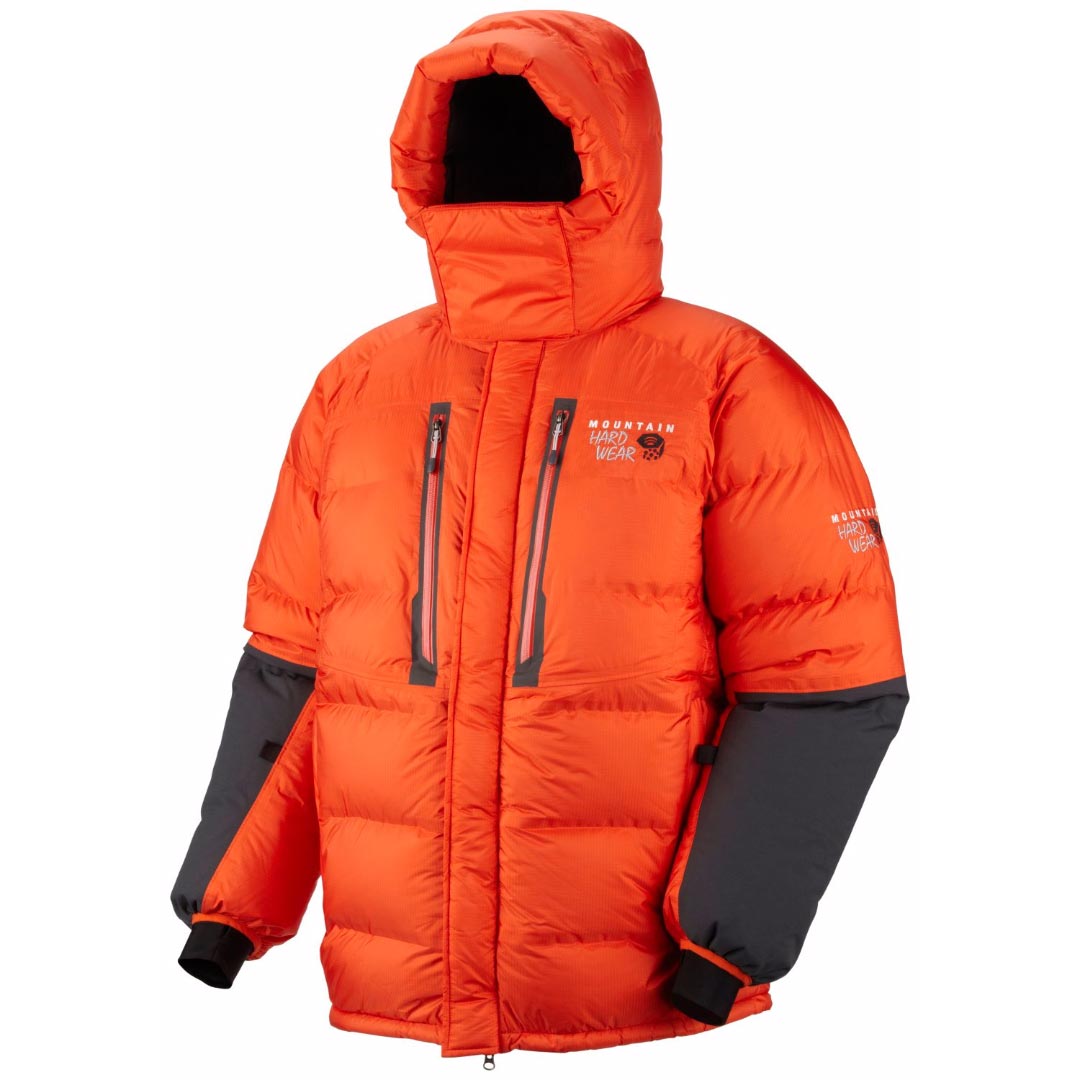
Face Protection: Layering is also important for your face. We recommend three pieces of gear to help protect your face from the cold: a buff, a face mask, and goggles. Buffs are an essential piece of gear for climbing, as they warm and humidify the air. Pack several of these and use them religiously. However, buffs are not enough. You will need at least one warm face mask that covers all of your skin in conjunction with the goggles. Make sure you’re prepared with at least one thick face mask. Last but not least, goggles are essential for keeping your eyes from freezing in storms and for keeping the dust out of your eyes on really windy days. We recommend bringing two pairs of goggles: one clear pair for night and one dark pair for sun protection. We recommend the Julbo Skydome Goggles.
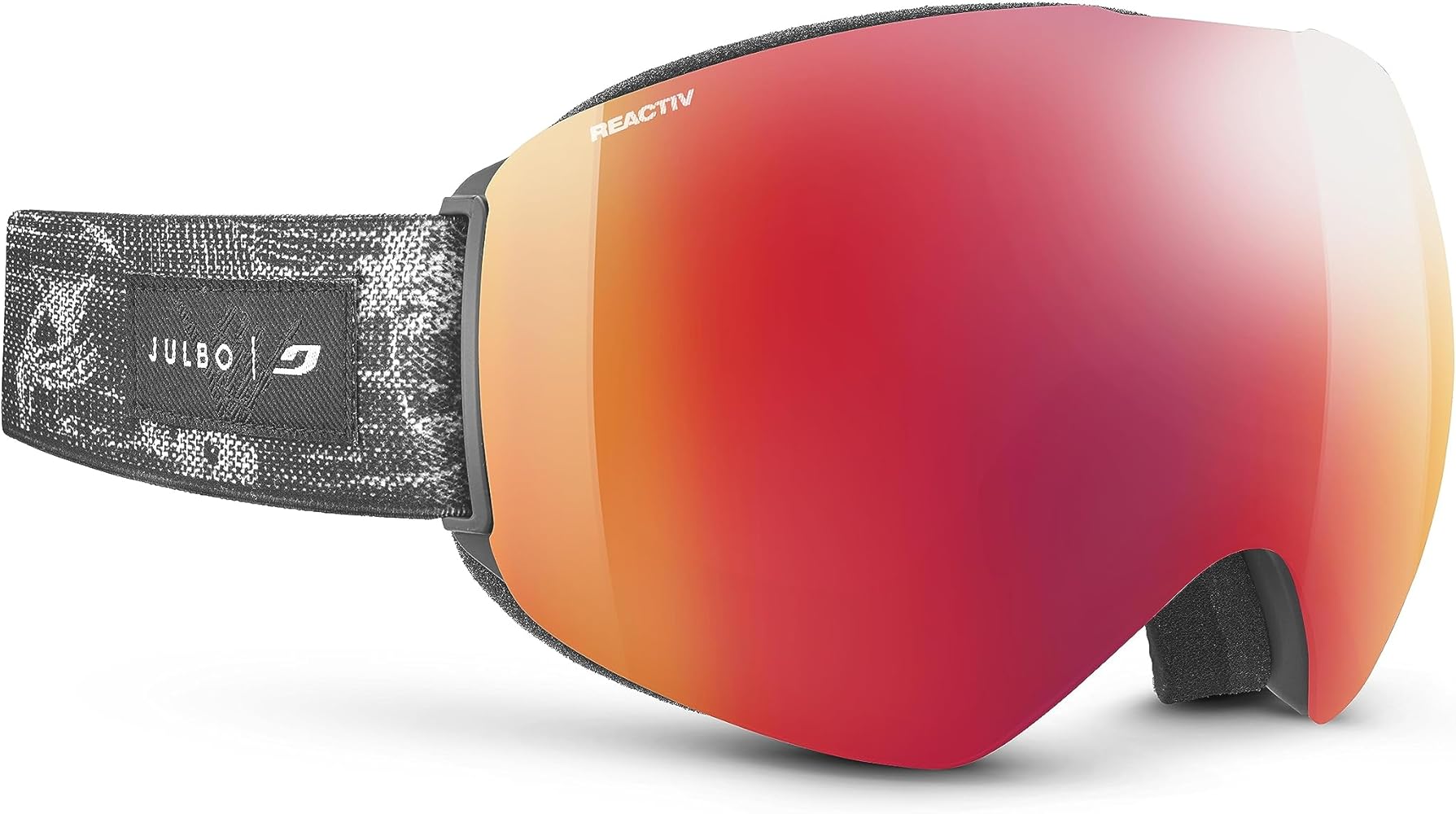
Hand and Toe Warmers: If your feet get cold easily or you just want to make sure they’re warm, we recommend buying some toe and hand warmers to slip in your boots and gloves for added warmth on the summit days. If your feet get really cold, consider buying an electrical heating system that can keep your feet warm for hours on the climb. We want to make sure that you don’t turn around on summit day because of cold feet. We recommend Hotronics Foot Warmers.
I’ve climbed Kilimanjaro. Am I ready to tackle Aconcagua?
Kilimanjaro is a great climb to take on before Aconcagua. It will introduce you to altitude and some of the general realities of mountain living, making it a common entrance point into the world of mountaineering. In fact, many highly successful climbers can trace their start back to Kilimanjaro. However, the leap from Kilimanjaro to Aconcagua can be a real challenge.
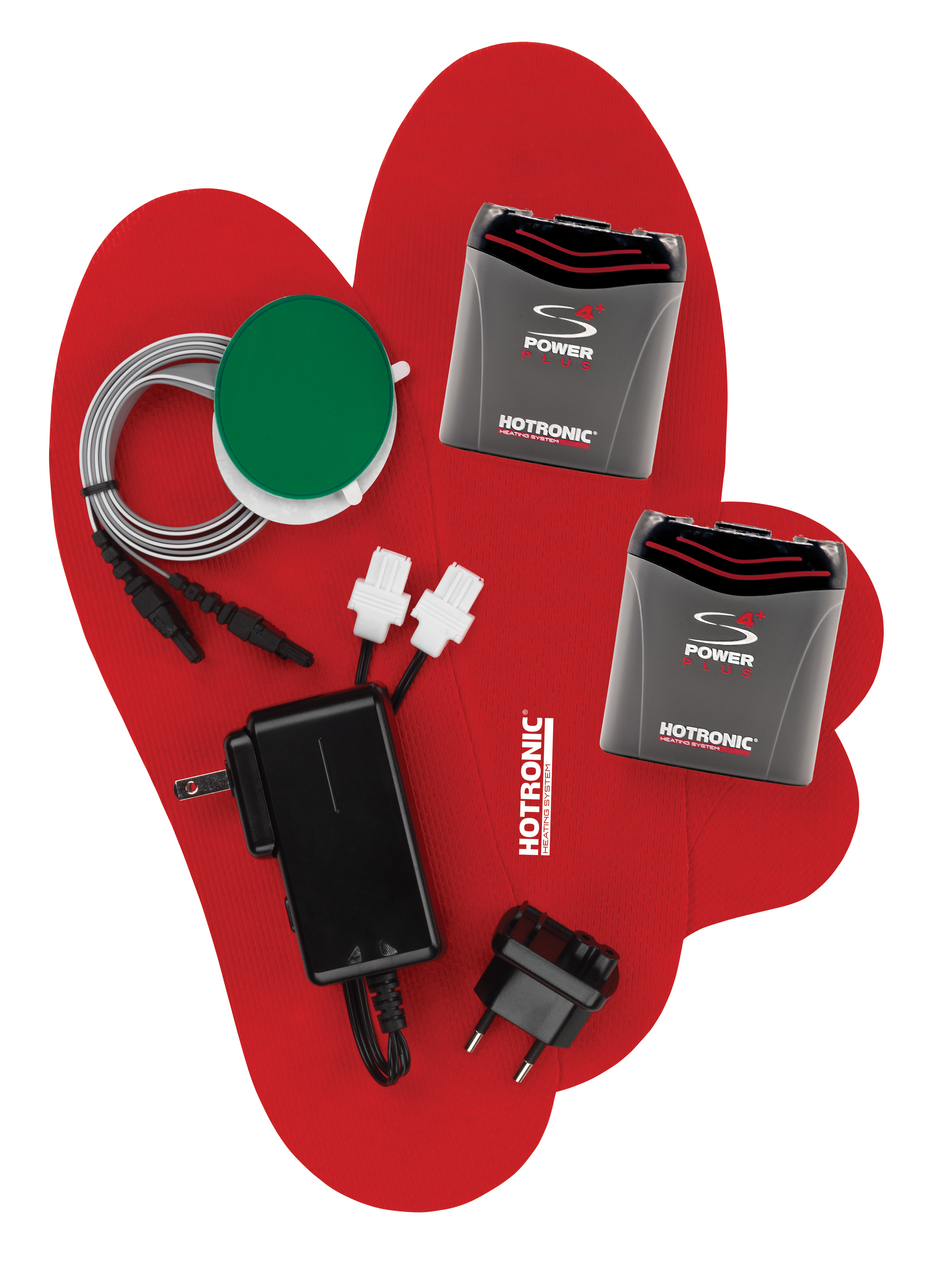
While Aconcagua doesn’t involve roped glacier travel and can sometimes be climbed without crampons, it is wholly different from Kilimanjaro. The mountain is significantly taller, and the expedition much longer, and those factors alone make Aconcagua significantly more difficult than Kilimanjaro.
We climb Aconcagua in a “capsule” style, meaning we bring our food, tents, fuel, and personal gear each time we move camp. Essentially, once we leave base camp, we run fully autonomously out of our packs. Each member of the team is expected to help carry some pieces of group gear, as well as be an active participant in setting up camp after each move. You can hire porters to assist with carrying weight (see above), but this cost is not included as part of the expedition.
We share all of this not to scare you away from Aconcagua but in the interest of transparency. We’ve seen climbers who make this leap too quickly and end up coming back two or three more times to finally reach the summit of Aconcagua, spending valuable time and money. We also know there are operators out there who bill Aconcagua as the perfect and easy next step after Kilimanjaro. The truth is, those operators have no qualms about attracting as many climbers as possible and then turning around low on the mountain. We much prefer an honest assessment of the challenge and helping set our climbers up for success through good, thorough training beforehand!
And remember, if you’ve climbed Kilimanjaro and felt a bit breathless and/or had a mild headache, that’s okay. Your body was working hard to adjust to the altitude and will do the same on Aconcagua. If you found it challenging to eat and drink on Kilimanjaro, that is also okay, but you will want to infuse nutrition training into your fitness training regime to ensure you can properly fuel and hydrate yourself on Aconcagua. Regardless of how you felt on Kilimanjaro, you will need to take your training seriously and prepare for Aconcagua, as its duration, remoteness, and altitude make it a serious challenge.
If you’re looking for an intermediate climb to prepare for Aconcagua, we recommend our Ecuador Volcanoes and/or Lobuche East expeditions, which will focus on the necessary skills to prepare you for summiting the Stone Sentinel.
How do mules support the expedition?
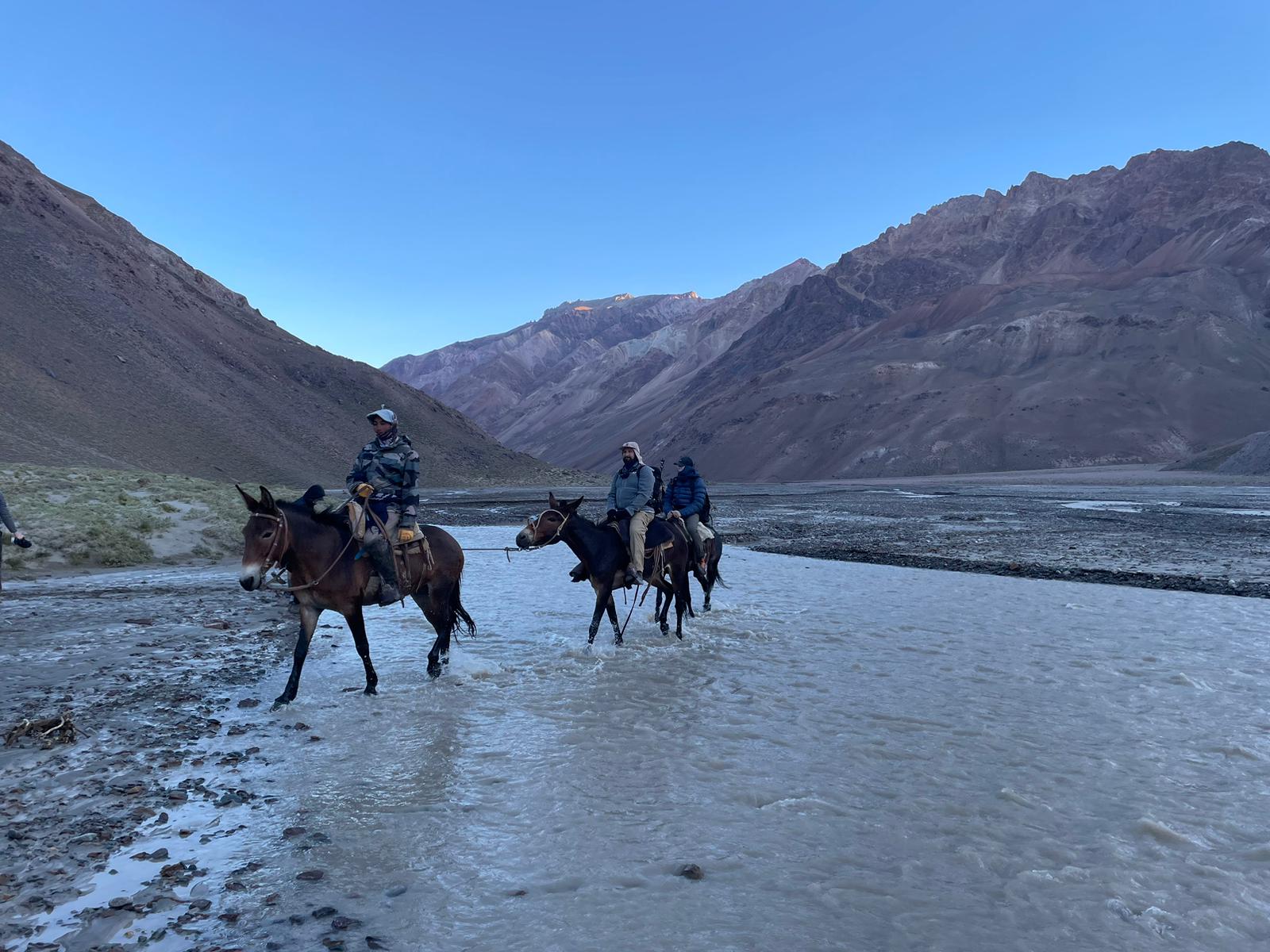
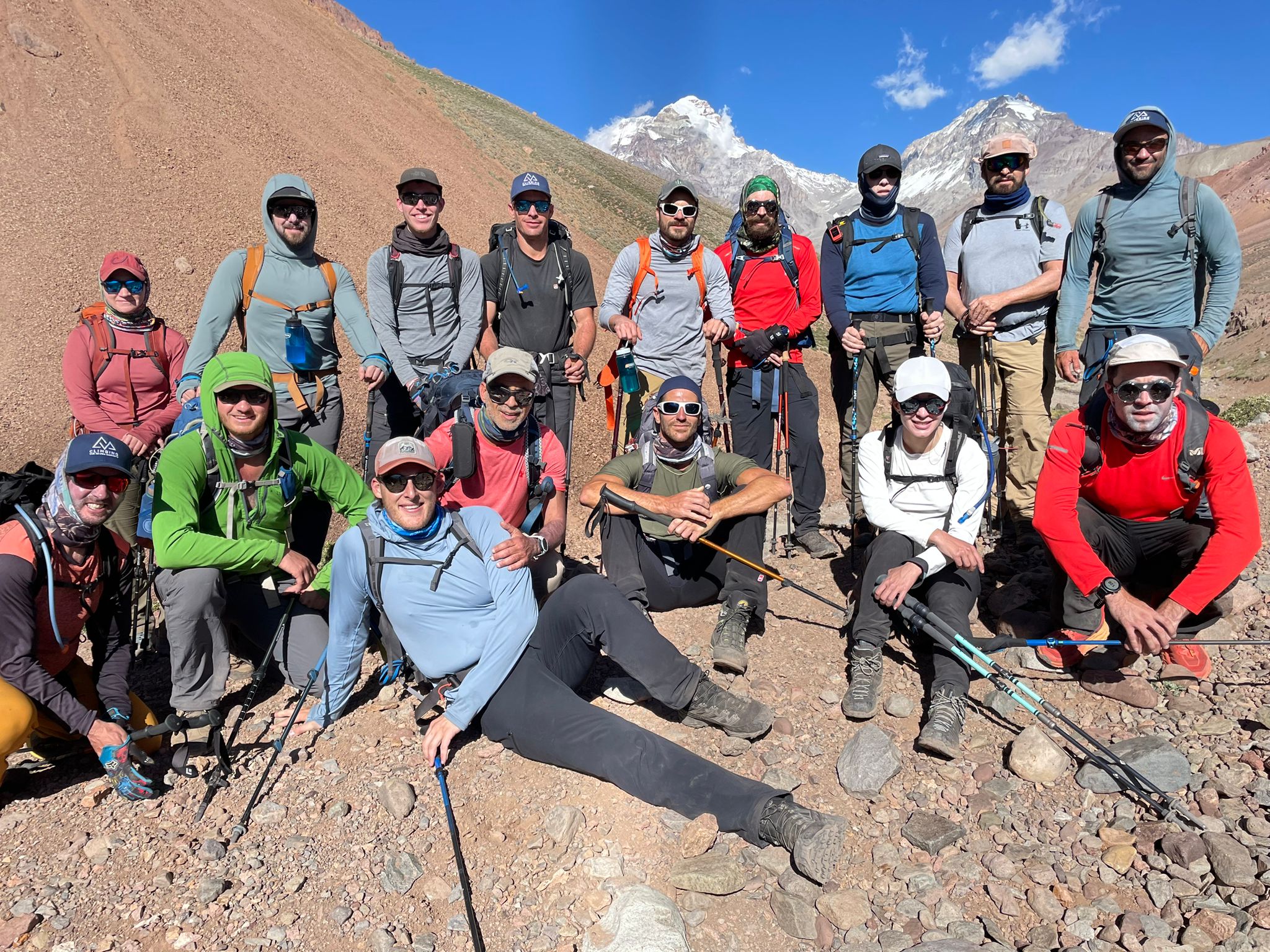
Surprise! We added a sixth question! After chatting with our Aconcagua Program Manager, we wanted to add one more question about mules and their role in the expedition. All CTSS expeditions include mule support during the three-day trek into Plaza Argentina Base Camp at the start of the expedition and the one-day trek out of Plaza de Mulas Base Camp at the end of the expedition.
At the start of the expedition in Mendoza, you will pack three bags—a day pack with daily essentials for the trek, a travel duffel that will move via mule and meet you on Days 4, 5, and 6, and a base camp duffel with your climbing equipment that will go straight to Plaza Argentina Base Camp. This makes the trek much easier, as climbers don’t have to haul all of their gear. It’s important to emphasize that you will not have access to your base camp duffel during the three-day trek to Plaza Argentina Base Camp.
After descending to Plaza de Mulas, you will have an 18-mile (30km) trek back to Penitentes, where the expedition officially ends. A mule will assist climbers by hauling out gear that is not needed during the one-day trek off the mountain. Since we traverse the mountain, we won’t cache gear on the mountain. Climbers need to make sure that they bring only the essentials up the mountain, as well as a pair of light, reliable, and comfortable sneakers that can be used as your camp booties and during your trek back to Penitentes. Gear will be left at Plaza Argentina Base Camp before ascending the mountain, but this gear will NOT meet you at Plaza Mulas Base Camp. It will meet you back at Penitentes.
Final Thoughts on Aconcagua
Aconcagua is truly one of the world’s great mountains. Climbing it is a serious endeavor that requires your full attention to detail and preparation and shouldn’t be underestimated. Please take the process seriously and know that the team at CTSS will be here to help. You will need to train hard and with commitment, purchase your gear early, and make sure you are familiar with it and know how to use it. Pack and repack your bags several times to make sure you haven’t missed anything. Little details can make a big difference on the climb.
If you have any questions that remain unanswered, drop us an email at info@climbingthesevensummits.com, and our team can offer one-to-one support to make your climbing dreams a reality.
The Seven Summits Series: Aconcagua
Aconcagua is one mountain you don’t want to underestimate. Fierce weather, extreme altitude, heavy load carries, and a lengthy expedition timeline make the journey to South America’s tallest peak a serious undertaking for any mountaineer.
If you’re ready to learn what it takes to summit the highest mountain in the world outside of the Himalayas, check out our webinar and Q&A session hosted by CTSS Owner Mike Hamill and Senior Guide Nani Stahringer. During this webinar, Mike and Nani will share how you can physically and mentally prepare for Aconcagua so you can set yourself up for greater success on the mountain. From gear and training advice to porters and route selection, if you’ve been eyeing the big A, be sure to tune in!